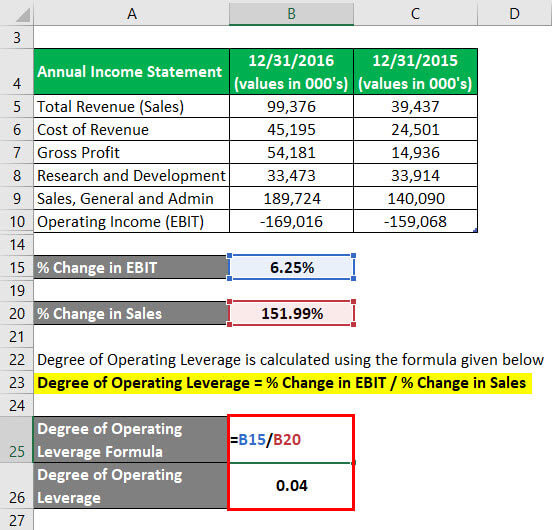
Let’s see how the measure can impact the company’s business and financial health. Although the companies are not making hundred dollars in profit on each sale, they earn substantial income to cover their costs. This article will walk you through the degree of operating leverage, its relation with operating leverage, illustrations, and the importance of DOL for a firm.
Do you already work with a financial advisor?
Companies with higher leverage possess a greater risk of producing insufficient profits since the break-even point is positioned higher. For both the numerator and denominator, the “change”—i.e., the delta symbol—refers to the year-over-year change (YoY) and can be calculated by dividing the current year balance by the prior year balance and then subtracting by 1. InvestingPro offers detailed insights into companies’ Degree of Operating Leverage (DOL) including sector benchmarks and competitor analysis.

How To Calculate It?
In year one, the operating expenses stood at $450,000, while in year two, the same went up to $550,000. It wouldn’t be wrong to say that high DOL is the companion of good times. Your profitability is supercharged by high DOL when business conditions and economic circumstances are favorable.
What does a high DOL indicate?
- More sensitive operating leverage is considered riskier since it implies that current profit margins are less secure moving into the future.
- Let us take the example of Company A, which has clocked sales of $800,000 in year one, which further increased to $1,000,000 in year two.
- High operating leverage during a downturn can be an Achilles heel, putting pressure on profit margins and making a contraction in earnings unavoidable.
- However, if sales fall by 10%, from $1,000 to $900, then operating income will also fall by 10%, from $100 to $90.
- Once obtained, the way to interpret it is by finding out how many times EBIT will be higher or lower as sales will increase or decrease respectively.
In this best-case scenario of a company with a high DOL, earning outsized profits on each incremental sale becomes plausible, but this type of outcome is never guaranteed. However, if revenue declines, the leverage can end up being detrimental to the margins automated expense management software of the company because the company is restricted in its ability to implement potential cost-cutting measures. Suppose the operating income (EBIT) of a company grew from 10k to 15k (50% increase) and revenue grew from 20k to 25k (25% increase).
Degree of Operating Leverage Formula
Given that the software industry is involved in the development, marketing and sales, it includes a range of applications, from network systems and operating management tools to customized software for enterprises. Unfortunately, unless you are a company insider, it can be very difficult to acquire all of the information necessary to measure a company’s DOL. Consider, for instance, fixed and variable costs, which are critical inputs for understanding operating leverage. It would be surprising if companies didn’t have this kind of information on cost structure, but companies are not required to disclose such information in published accounts.
Companies with high operating leverage can make more money from each additional sale if they don’t have to increase costs to produce more sales. The minute business picks up, fixed assets such as property, plant and equipment (PP&E), as well as existing workers, can do a whole lot more without adding additional expenses. Intuitively, the degree of operating leverage (DOL) represents the risk faced by a company as a result of its percentage split between fixed and variable costs.
For example, the DOL in Year 2 comes out 2.3x after dividing 22.5% (the change in operating income from Year 1 to Year 2) by 10.0% (the change in revenue from Year 1 to Year 2). However, since the fixed costs are $100mm regardless of the number of units sold, the difference in operating margin among the cases is substantial. The reason operating leverage is an essential metric to track is because the relationship between fixed and variable costs can significantly influence a company’s scalability and profitability. The enterprise invests in fixed assets aiming for the volume to produce revenues that cover all fixed and variable costs.
This means that they are fixed up to a certain sales volume, varying to higher levels when production and sales volume increase. The company’s overall cost structure is such that the fixed cost is $100,000, while the variable cost is $25 per piece. The degree of operating leverage (DOL) measures a company’s sensitivity to sales changes. The higher the DOL, the more sensitive operating income is to sales changes.
Leave a Reply